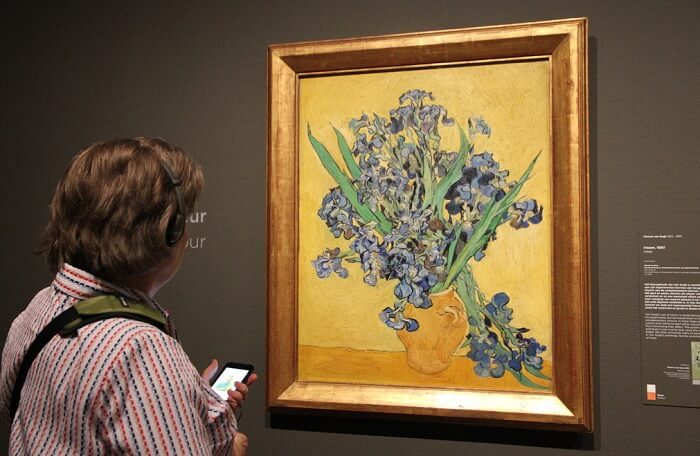Still life with Irises, 1890 by Vincent Van Gogh

In his last weeks at Saint-Rémy before he moved north again, Van Gogh painted a series of still lifes. The size and scale of these recall the monumental painting of Sunflowers of the summer of 1888, but the disciplined use of complementary colors also establishes a link with the experiments in color and in flower painting which absorbed him in his first year in Paris, 1886.
In Saint-Rémy, Van Gogh painted pink roses against a green ground, and here, violet irises against a yellow field. The painting betrays a renewed liveliness and intensity of color. Instead of toning down the contrasts in order to harmonize the different parts of the painting, as he sometimes did, Van Gogh has tried here, as he had done in Paris, to sharpen and heighten them.

Van Gogh has painted these flowers on what was his preferred size of canvas in late 1888-90. The regular use of the same size of canvas meant that if and when his paintings were exhibited, they would work together as a series.
Of Still life with Irises, Van Gogh wrote:
At present all goes well, the whole horrible attack has disappeared like a thunderstorm and I am working to give a last stroke of the brush here with a calm and steady enthusiasm. I am doing a canvas of roses with a light green background and two canvases representing big bunches of violet irises, one lot against a pink background in which the effect is soft and harmonious because of the combination of greens, pinks, violets. On the other hand, the other violet bunch (ranging from carmine to pure Prussian blue) stands out against a startling citron background, with other yellow tones in the vase and the stand on which it rests, so it is an effect of tremendously disparate complementaries, which strengthen each other by their juxtaposition."




















